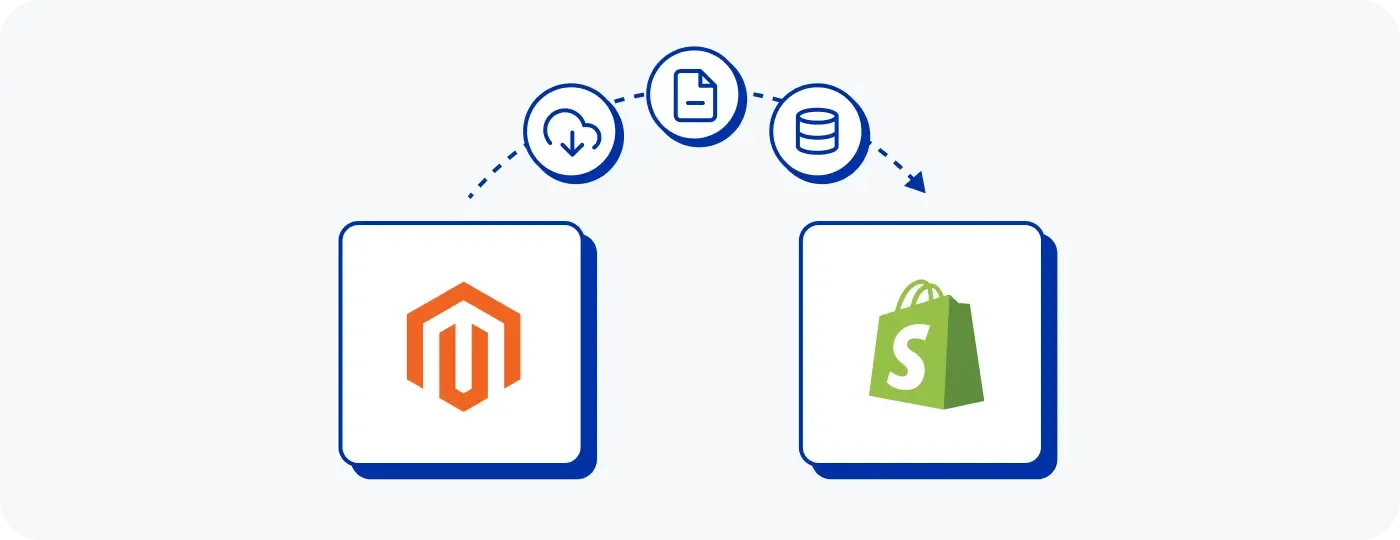In the rapidly evolving digital commerce landscape, enterprise organizations find themselves at a pivotal crossroads. The platforms that once served as robust foundations for digital commerce now increasingly represent constraints rather than catalysts for growth. This strategic inflection point has precipitated a significant migration wave from legacy platforms—particularly Magento—to more agile, cloud-native solutions like Shopify. This transition transcends mere technical implementation; it represents a fundamental business transformation with profound implications for competitive positioning and market responsiveness.
The Strategic Imperative for Platform Evolution
The decision to migrate from Magento to Shopify emerges not merely from technical considerations but from broader business imperatives that include:
Capital Allocation Efficiency
Enterprise organizations increasingly recognize that allocating substantial capital toward maintaining complex on-premise infrastructure diverts resources from their core differentiation. When engineering talent focuses predominantly on keeping systems operational rather than driving innovation, competitive erosion becomes inevitable. Shopify’s cloud-native architecture fundamentally restructures this equation, transforming fixed capital expenses into variable operational costs while simultaneously reducing the technical debt burden.
Speed-to-Market Acceleration
In contemporary markets, velocity often trumps perfection. Organizations that can deploy new capabilities with greater frequency and lower risk establish formidable competitive advantages. Magento implementations frequently require extensive development cycles for even modest enhancements, whereas Shopify’s composable architecture facilitates rapid capability deployment without sacrificing stability or performance.
Organizational Focus Recalibration
Exceptional enterprises maintain relentless focus on their distinctive value propositions rather than diluting attention across non-differentiating operational functions. For most organizations, commerce platform maintenance falls squarely into the latter category. The migration from Magento to Shopify enables strategic redeployment of organizational focus toward genuine differentiation rather than commodity platform management.
Framework for Migration Excellence
A successful Magento to Shopify migration demands a comprehensive framework that extends well beyond data transfer. The following dimensions require meticulous attention:
1. Strategic Capability Assessment
Before technical implementation begins, enterprises must conduct a dispassionate inventory of their current Magento implementation’s capabilities, distinguishing between:
- Core Commerce Functions: Standard capabilities like catalog management, checkout flows, and order processing that exist in both platforms but may operate differently
- Genuine Differentiators: Custom-developed features that tangibly impact customer experience and business outcomes
- Legacy Accommodations: Functionality developed primarily to work around platform limitations rather than deliver customer value
- Technical Debt Artifacts: Components that exist solely because of historical decisions rather than current business requirements
This assessment creates the foundation for principled decision-making throughout the migration journey, particularly regarding what to migrate, what to reimagine, and what to discard.
2. Data Architecture Rationalization
Enterprise Magento implementations frequently accumulate substantial data complexity over time. Rather than perpetuating this complexity, migration presents a valuable opportunity for rationalization. This process demands:
- Customer Data Consolidation: Creating unified customer profiles that resolve fragmentation across multiple systems
- Product Information Refinement: Establishing consistent attribute taxonomies and relationship models
- Order History Normalization: Standardizing transaction records to enable seamless analysis and service
- Content Strategy Alignment: Ensuring that product narratives and digital assets align with current brand standards
The migration provides a rare opportunity to transform data from a compliance necessity into a strategic asset.
3. Integration Ecosystem Modernization
Enterprise commerce environments rarely operate in isolation, instead functioning within complex ecosystems of interconnected systems. Migration success depends on thoughtful modernization of these connections:
- API-First Architecture: Replacing brittle point-to-point connections with resilient API-mediated interactions
- Event-Driven Patterns: Implementing publish-subscribe models that reduce system coupling
- Microservice Adoption: Decomposing monolithic functions into discrete, independently deployable services
- Orchestration Layer Development: Creating intelligent coordination mechanisms that maintain transaction integrity across distributed systems
This architectural evolution transforms integrations from potential failure points into enablers of business agility.
4. Experience Continuity Planning
Customer experience continuity represents a non-negotiable requirement for enterprise migrations. Achieving this continuity demands:
- SEO Transition Management: Implementing comprehensive URL mapping and redirection strategies
- Performance Baseline Establishment: Documenting current performance metrics as migration success criteria
- User Journey Preservation: Ensuring that established customer paths remain intact despite platform changes
- Incremental Deployment Approaches: Utilizing phased rollouts to mitigate risk and facilitate adjustment
These measures ensure that the migration delivers technical benefits without undermining the customer relationships that ultimately drive business value.
Implementation Excellence: From Strategy to Execution
Translating strategic intent into operational reality requires disciplined execution across multiple dimensions:
Phase 1: Discovery and Planning
Successful migrations begin with exhaustive discovery that documents the current state in granular detail:
- Catalog structure and relationships
- Customer data models and segmentation approaches
- Order processing workflows and exceptions
- Integration touch points and data flows
- Custom functionality and business logic
This discovery informs a detailed migration roadmap that sequences activities to minimize business disruption while maintaining implementation momentum.
Phase 2: Foundation Establishment
Before data migration begins, the target Shopify environment requires proper configuration:
- Store architecture and multi-site governance
- User roles and permission frameworks
- Tax and payment processing configurations
- Shipping and fulfillment rule structures
- Reporting and analytics foundations
These foundational elements ensure that migrated data enters a properly structured environment rather than requiring subsequent reconfiguration.
Phase 3: Migration Execution
The core migration process demands meticulous attention to detail across multiple data domains:
- Products and associated digital assets
- Customer accounts and purchase history
- Outstanding orders and fulfillment status
- Content pages and navigation structures
- Promotions and pricing rules
Each domain requires specific validation protocols to ensure completeness and accuracy throughout the transfer process.
Phase 4: Extension and Integration
With core data successfully migrated, attention turns to extending the platform’s capabilities:
- Third-party application integration
- Custom functionality development
- API and webhook implementation
- Enhanced analytics deployment
- Performance optimization
These extensions transform the base platform into a tailored solution aligned with specific business requirements.
The Non-Technical Dimensions of Migration Success
While technical excellence represents a necessary condition for successful Magento to Shopify migration, it proves insufficient without corresponding attention to organizational dimensions:
Change Management Discipline
Effective migrations require comprehensive change management that addresses:
- Stakeholder expectation alignment
- Training and capability development
- Process redesign and documentation
- Performance measurement recalibration
These elements ensure that the organization can fully leverage the new platform’s capabilities rather than attempting to force legacy processes onto modern architecture.
Governance Evolution
As the technical foundation evolves, so too must governance structures:
- Decision rights and accountability frameworks
- Release management protocols
- Data stewardship responsibilities
- Performance monitoring mechanisms
This governance evolution ensures sustainable value realization beyond the initial implementation.
Conclusion: Beyond Migration to Transformation
A successful Magento to Shopify migration transcends technical implementation to enable fundamental business transformation. When executed with strategic clarity and technical precision, this journey delivers not merely a modernized platform but enhanced organizational capabilities that drive sustained competitive advantage.
The most successful migrations partner technical expertise with business acumen. Firms like Devsinc exemplify this balanced approach, bringing both deep platform knowledge and strategic perspective to enterprise migrations. Their experience navigating complex transformations enables clients to avoid common pitfalls while accelerating time-to-value.
The decisions made during platform migration reverberate far beyond the implementation period, shaping digital capabilities for years to come. Approaching this process with appropriate strategic gravity focusing not merely on feature parity but on capability enhancement transforms a potential disruption into a catalyst for sustainable growth. The organizations that recognize this opportunity and execute with excellence position themselves for enduring digital commerce leadership.
YOU MAY ALSO LIKE: The Essential Shopify Tech Stack for E-commerce Growth in 2025











